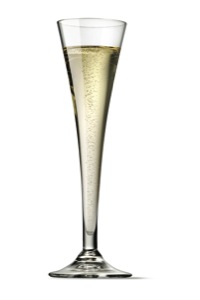
As the legendary drink of the elite, Champagne is the undisputed standard for sparkling wine. It is invigorating – even erotic. Champagne’s subtle bubbles and crisp flavor excite passion. From Winston Churchill to the British Royal Family; at the White House and in the homes of Hollywood’s royalty; this wine, from the northeast region of France, is ubiquitous.
Unlike any other wine, Champagne – the official drink of New Year’s Eve – has established its appellation as a brand name synonymous with prestige – and the highest prices.
Not to take away from Spanish Cava and Italian Prosecco, or the Californian and Australian products, Champagne is the championship title holder in the world of sparkling wines. Ironically, France’s Champagne region produces less than 10 percent of wine from this category. And yes, it is true, Champagne can only be called Champagne if it comes from Champagne, otherwise it is just sparkling wine.
The Champagne region lies northeast of Paris. It is centered around the small towns of Reims and Epernay and from its earliest history, has been at the crossroads of major trade routes. It is an area that is blessed with great prosperity and, amazingly, its wine history can be traced back to the 5th century (though sparkling wines came later).
The wine itself is made of three grapes: Chardonnay, Pinot Noir and Pinot Meunier. Big, structured wines are never produced in Champagne; it is a region that strictly produces sparkling wine. Almost all Champagne is white, even though two-thirds of it is made from black grapes which produce red wines. When the red grapes are picked, they must be pressed rapidly, using a specific procedure, to prevent the color running from the grape skins. This is the main reason mechanical harvesters are banned in Champagne.
Take care when buying Champagne; there’s an appropriate selection for every dish and every occasion. Almost no other wine has such a broad range. Each Champagne producer bestows their cuvée with its own unique character.
You’ll find some that are fruity and flowery, fresh and mature, sweet and very dry. Of course, there are good and bad, fine and ordinary, expensive and cheap varieties too. There are rules to remember when choosing a Champagne.
First, learn the terms and what they mean. For example, the labeling of Brut is the indication that the Champagne will be dry. It will be lively, fresh and makes a delicious aperitif. Sec on the other hand, although meaning dry, is not. These wines will be a tad sweeter and should be drunk after dinner or later in the evening as a digestive. Both Brut and Sec Champagnes can be found anywhere and are generally at reasonable prices.
Learn what you like and where it comes from, then branch out to the next level – a move that will also mean increasing your budget. Made strictly from Chardonnay grapes with more structure and balance, Blanc de Blancs are most prestigious. They’re great with shellfish and fish. For something with more “meat” and blatant fruitiness, try a Blanc de Noir, made from Pinot Noir and Meunier black grapes.
This New Year’s Eve, pick up a Rosé or a Cuvée Prestige. Both are nearly always long matured wines from an outstanding vintage, some of which have legendary reputations and prices to match.











